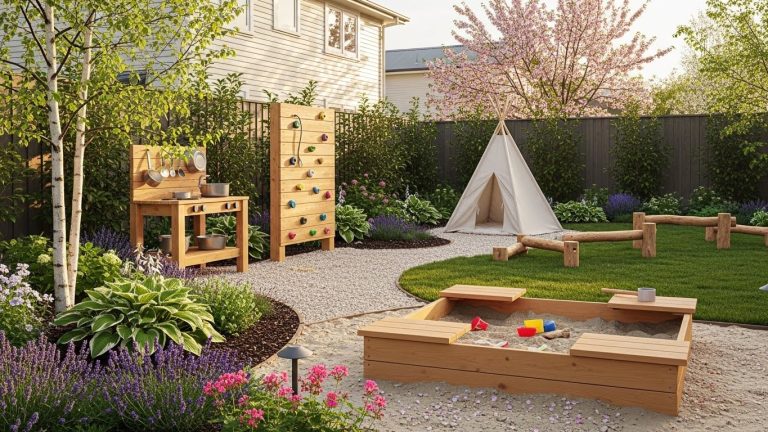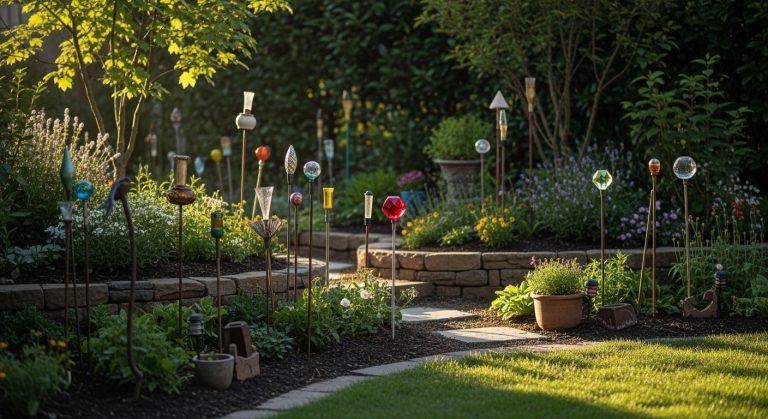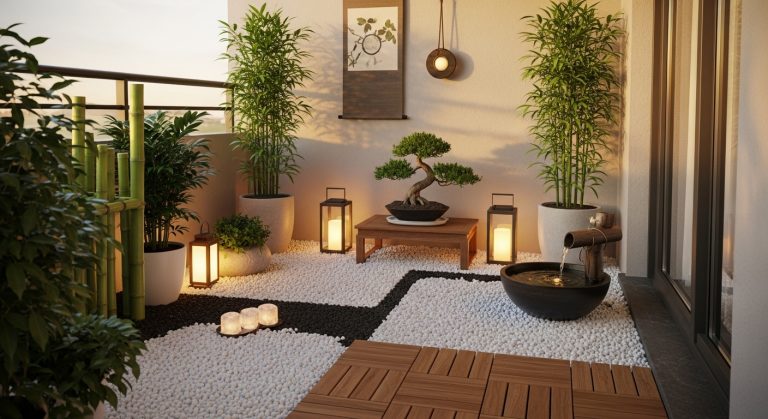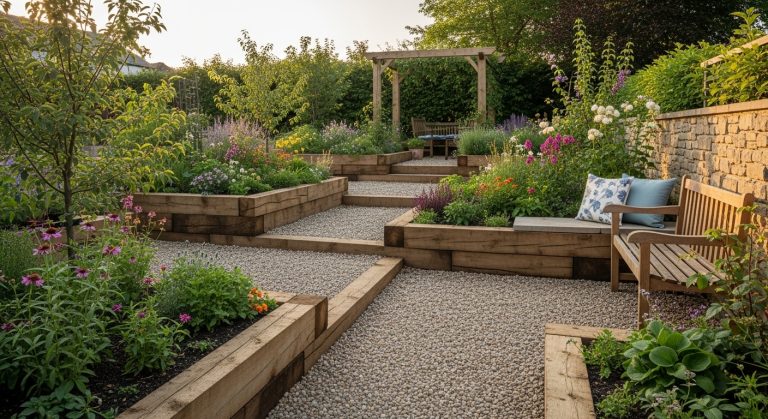Cottage Garden Ideas: 15 Dreamy Ways to Create Your Own Flower-Filled Haven
Ever stood in front of a photo of an English cottage garden and felt that mix of awe and comfort — the kind that makes you want to kick off your shoes and sip tea among the blooms? Yeah, me too. Cottage gardens have that rare magic: they’re a little wild, deeply personal, and bursting with life.
Whether you’ve got a tiny backyard or sprawling countryside space, cottage garden ideas can transform your patch of land into something straight out of a fairy tale. The best part? You don’t need perfection — just heart, texture, and a love for plants that do their own thing.
Let’s wander through 15 inspiring cottage garden ideas that’ll help you create your own slice of timeless beauty.
1. Layered Planting for that “Perfectly Imperfect” Look
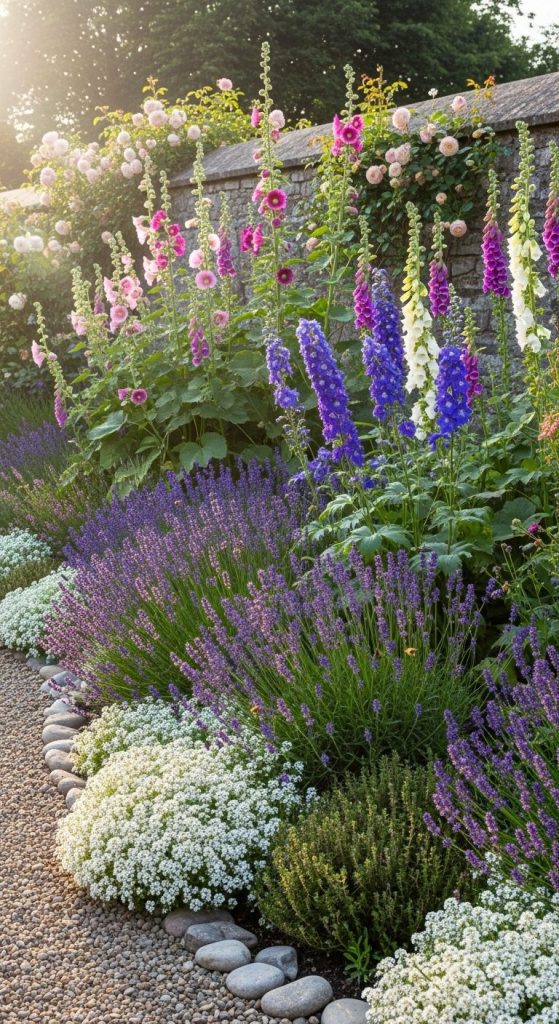
If there’s one rule in a cottage garden, it’s this: embrace abundance. The secret lies in layering — tall blooms in the back, mid-height shrubs in the middle, and low-growing plants spilling onto pathways.
Pros:
- Creates a lush, full look without much effort.
- Encourages biodiversity and attracts pollinators.
- Hides bare soil, keeping weeds in check.
Cons:
- Can look overgrown if not occasionally trimmed.
Takeaway:
Layering plants is what gives a cottage garden its charm — a natural tapestry that feels alive from every angle.
2. Mix Flowers, Herbs, and Vegetables Together
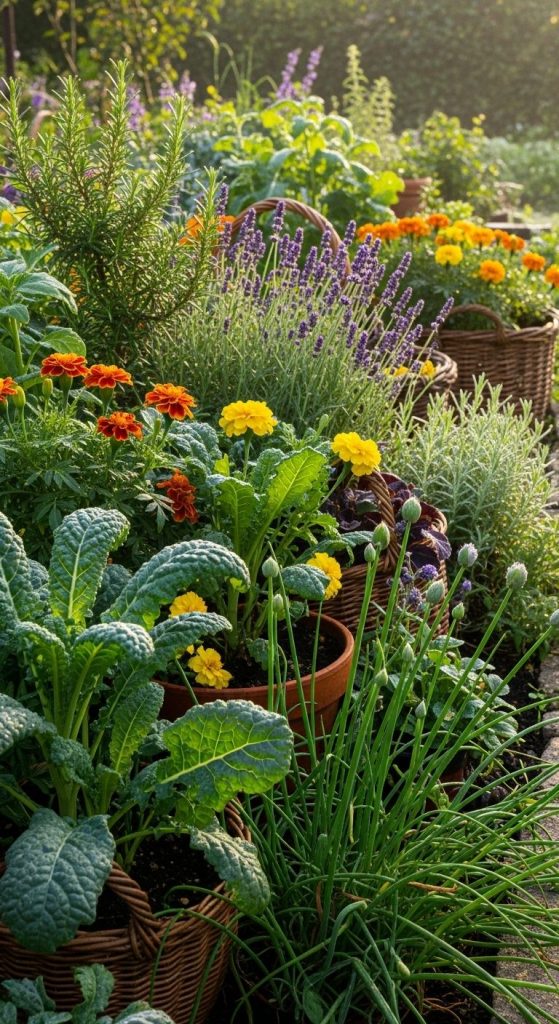
In true cottage style, practicality meets beauty. Mix fragrant herbs like rosemary or lavender among flowers and edible greens. It’s an organized chaos that just works.
Pros:
- Adds texture, scent, and utility to your garden.
- Encourages pollination for better harvests.
- Reduces pest problems naturally.
Cons:
- Requires good spacing so herbs don’t crowd flowers.
Takeaway:
This combination brings your garden to life — it’s a feast for the eyes and your kitchen.
3. Add a Winding Stone Pathway
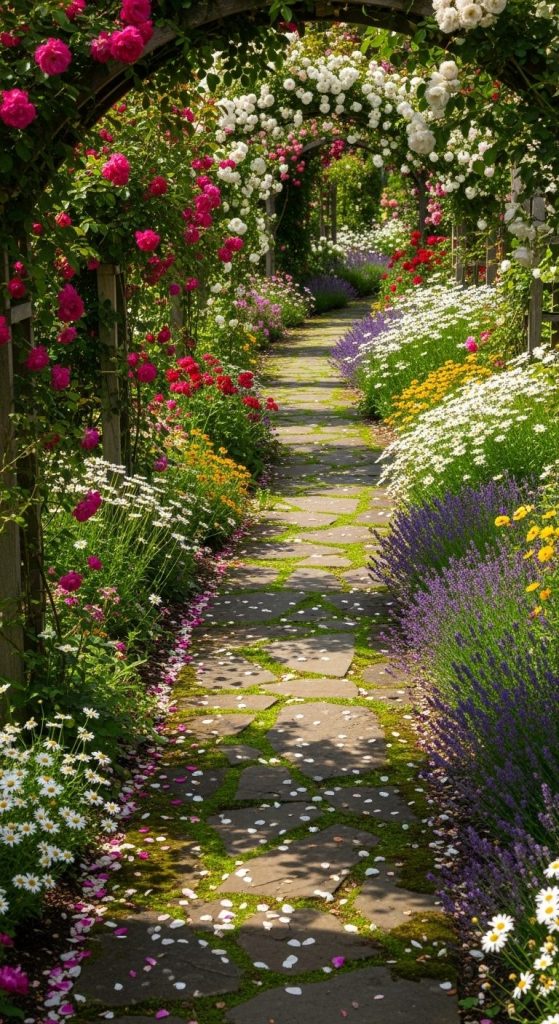
Nothing says “come wander” like a meandering stone path weaving through dense flowers. It’s functional, yes, but also romantic.
Pros:
- Defines structure within wild planting.
- Prevents soil compaction around delicate roots.
- Adds instant old-world charm.
Cons:
- May need occasional weed control between stones.
Takeaway:
A curving path feels like a secret journey — the kind where every step reveals another bloom or buzzing bee.
4. Rustic Fencing and Gates
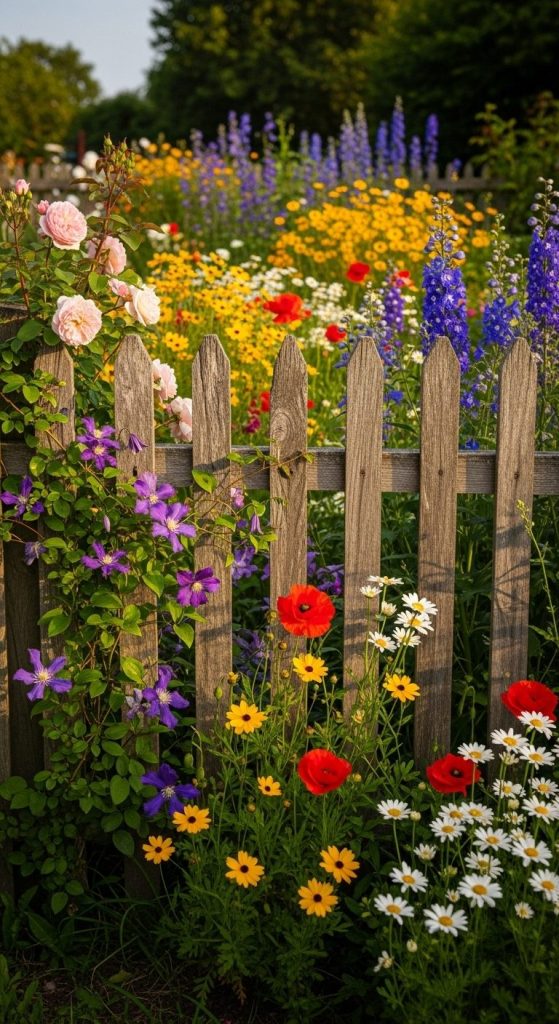
Forget pristine fences — think weathered wood, white pickets, or wrought iron wrapped in climbing roses. The fence becomes part of the story.
Pros:
- Adds structure without feeling rigid.
- Great backdrop for vines and flowers.
- Enhances privacy and nostalgia.
Cons:
- Wood fencing requires periodic maintenance.
Takeaway:
A rustic fence frames your garden beautifully — it’s both boundary and invitation.
5. Overflowing Window Boxes

Window boxes are small but mighty. Stuff them with geraniums, ivy, and petunias that cascade down like waterfalls of color.
Pros:
- Adds instant charm to cottages and balconies.
- Easy to switch plants seasonally.
- Makes every view from inside cheerful.
Cons:
- Needs regular watering in summer.
Takeaway:
Even if you don’t have much yard space, window boxes bring cottage beauty right to your sill.
6. Wildflower Corners for a Natural Feel
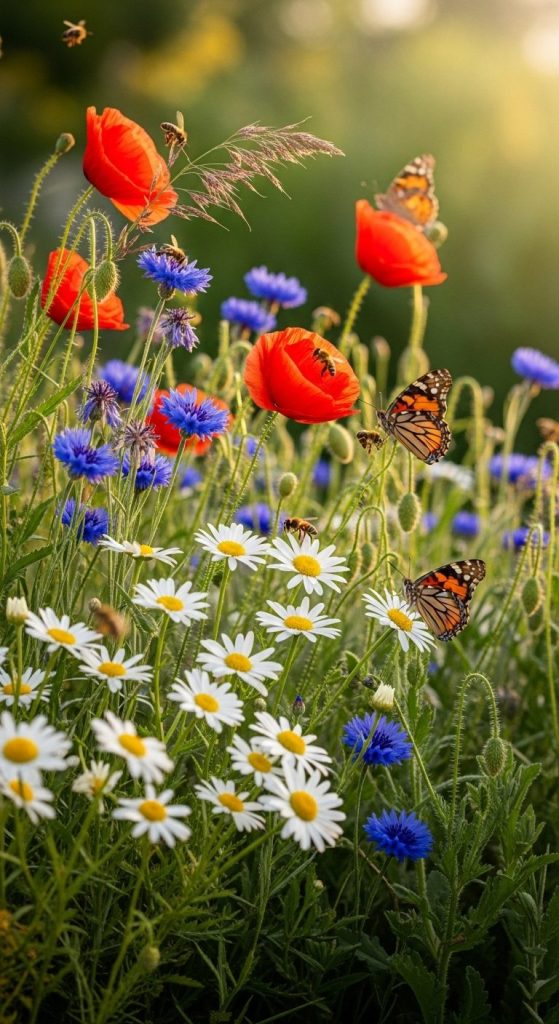
Want that effortlessly wild vibe? Dedicate a small section of your garden to native wildflowers. They’ll grow freely, inviting butterflies and bees to join the party.
Pros:
- Extremely low maintenance once established.
- Supports local wildlife and pollinators.
- Adds a painterly, spontaneous feel.
Cons:
- Can look untidy if not balanced with structure.
Takeaway:
A wildflower patch adds movement, color, and authenticity — nature at its best.
7. Vintage Containers and Planters

Old metal tubs, wooden crates, and ceramic pots — these aren’t just containers; they’re character pieces.
Pros:
- Perfect for small spaces or patios.
- Adds personality and repurposes vintage finds.
- Easy to rearrange seasonally.
Cons:
- Containers can dry out faster than ground soil.
Takeaway:
A few weathered pots filled with herbs and flowers bring instant cottage flair anywhere.
8. Climbing Roses and Clematis Arches

Few things stop you in your tracks like roses tumbling over an archway. Pair them with clematis for continuous blooms through the season.
Pros:
- Adds vertical interest and romantic drama.
- Encourages pollinators.
- Frames pathways or entryways beautifully.
Cons:
- Requires occasional pruning and training.
Takeaway:
A flowering arch turns your garden into a fairytale — and every walk feels like a scene from a movie.
9. Cozy Seating Nooks
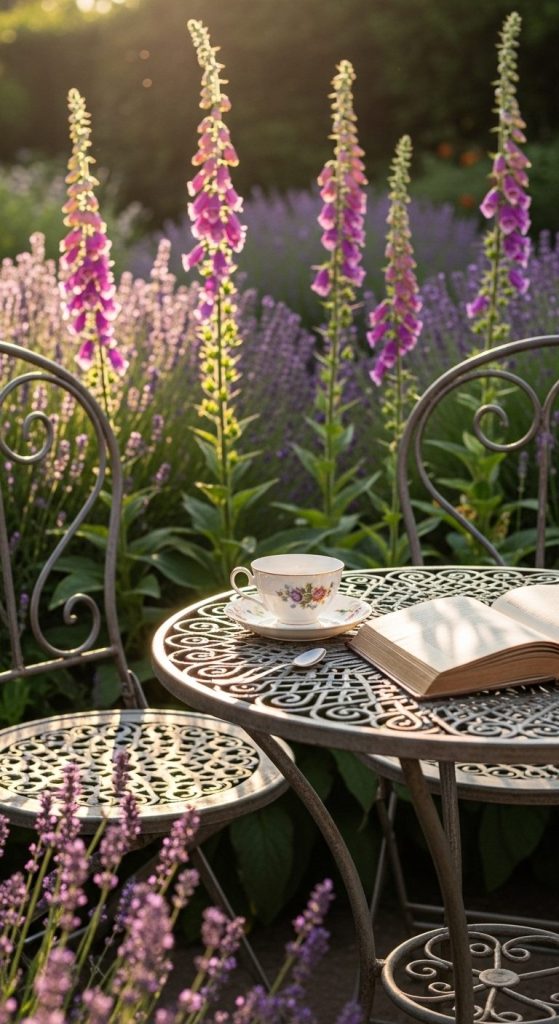
Cottage gardens aren’t just for looking — they’re for living. Add a bench, bistro set, or swing surrounded by blooms.
Pros:
- Creates a space for relaxation and reflection.
- Encourages enjoying your garden daily.
- Adds visual balance among dense planting.
Cons:
- Furniture may need protection from weather.
Takeaway:
Your garden deserves a seat — because beauty is meant to be enjoyed up close.
10. Garden Borders Bursting with Color

A true cottage garden doesn’t shy away from color. Plant borders with bold, mixed hues — pinks, purples, yellows, and whites all mingling freely.
Pros:
- Adds continuous seasonal color.
- Encourages creative expression.
- Attracts hummingbirds and bees.
Cons:
- Needs replanting of annuals for constant color.
Takeaway:
The more color, the better — cottage gardens thrive on joyful abundance.
11. Ornamental Paths and Garden Edging
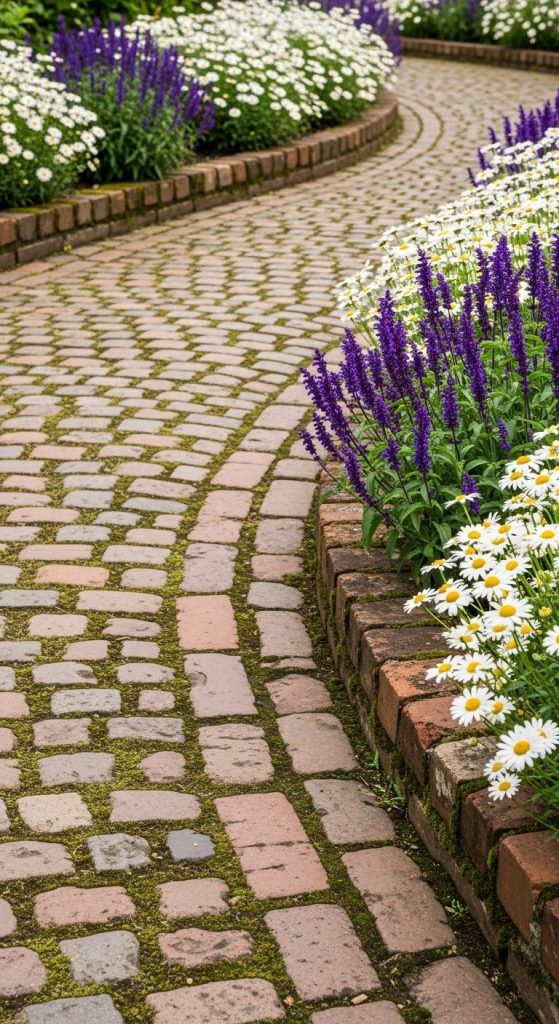
Brick, stone, or old tiles can frame flower beds beautifully. Cottage gardens love texture, and edging keeps wildness from going too far.
Pros:
- Keeps pathways neat and distinct.
- Adds visual rhythm and texture.
- Prevents soil erosion near beds.
Cons:
- Installation can be labor-intensive initially.
Takeaway:
Good edging makes even the wildest garden feel intentional and grounded.
12. Mix Old and New Garden Features
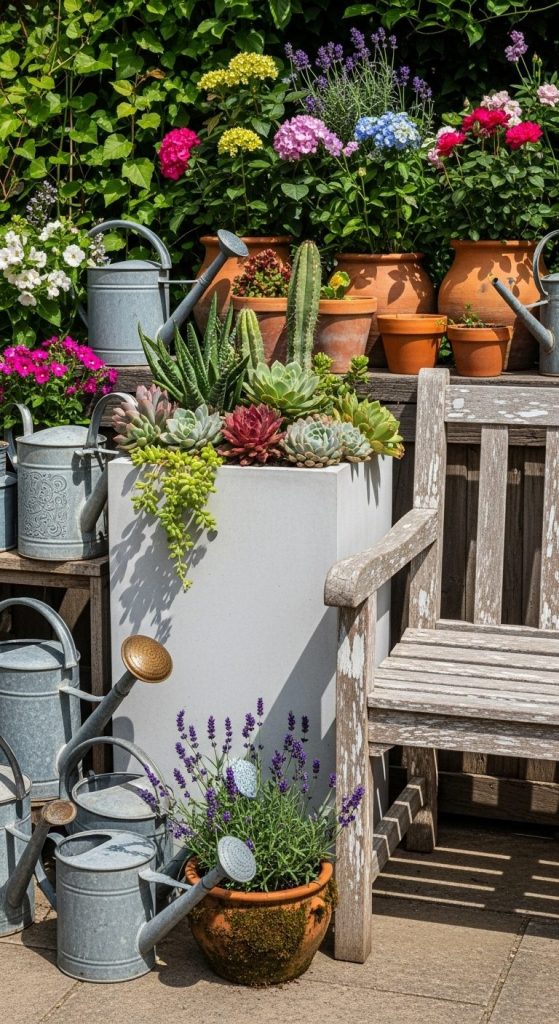
Combine modern planters with antique garden decor — think rusty watering cans beside sleek benches. It’s all about contrast.
Pros:
- Adds depth and personality.
- Prevents the space from feeling too themed.
- Encourages creative reuse.
Cons:
- Can feel cluttered if not edited carefully.
Takeaway:
Cottage style thrives on character — blending eras creates a garden that tells your story.
13. Add a Birdbath or Small Water Feature
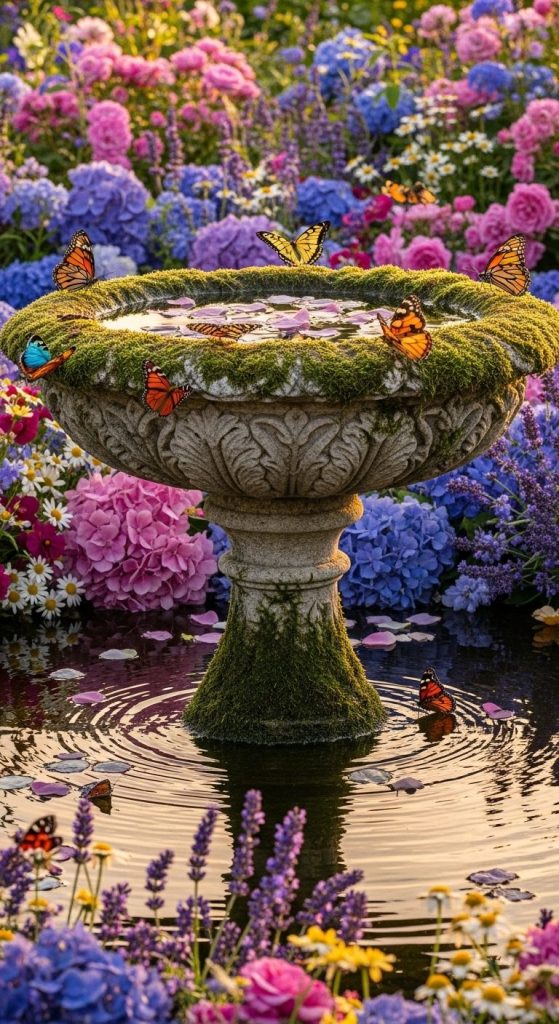
The gentle sound of trickling water makes any garden feel more alive. Even a small birdbath adds charm and invites wildlife.
Pros:
- Attracts birds and pollinators.
- Adds a focal point amid dense planting.
- Enhances the peaceful vibe.
Cons:
- Needs cleaning to prevent algae buildup.
Takeaway:
Water turns a static garden into a sensory experience — sight, sound, and serenity combined.
14. Seasonal Planting for Year-Round Interest

Cottage gardens don’t need to go dull in winter. Layer plants so something’s always happening — bulbs in spring, perennials in summer, berries in fall, and evergreens in winter.
Pros:
- Keeps the garden visually engaging year-round.
- Supports different wildlife through the seasons.
- Maximizes space and variety.
Cons:
- Requires planning across seasons.
Takeaway:
Seasonal design keeps your garden alive and evolving — no dull months allowed.
15. Embrace the “Perfectly Imperfect” Maintenance
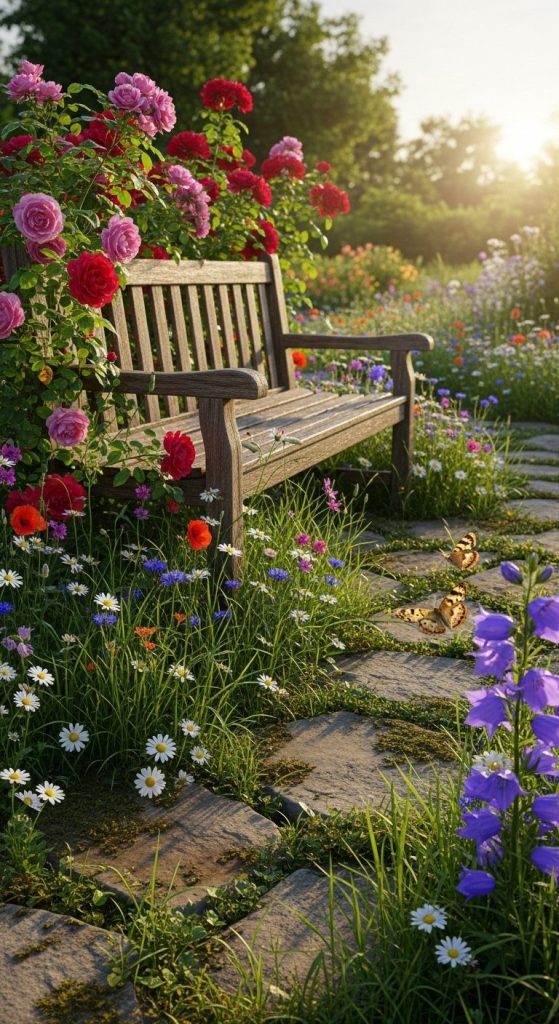
Cottage gardens are meant to be a bit wild. Don’t overthink symmetry — just prune lightly, deadhead blooms, and enjoy the natural rhythm.
Pros:
- Low stress and forgiving style.
- Encourages biodiversity and natural growth.
- Fits busy lifestyles without daily upkeep.
Cons:
- May look messy to lovers of manicured lawns.
Takeaway:
Perfection isn’t the goal — personality is. The secret? Let nature lead, and you’ll always win.
Conclusion
Cottage gardens remind us that beauty doesn’t come from control — it comes from coexistence. They’re living, breathing spaces where flowers, herbs, bees, and humans all find harmony.
Whether you’re building one from scratch or adding a few vintage touches to your modern yard, the key is to make it yours. Let the daisies mingle with the roses. Let ivy climb freely. Let imperfection be your greatest design element.
Because at the end of the day, a cottage garden isn’t just a style — it’s a feeling. A slow, fragrant reminder that nature, when left to its own poetry, always knows what she’s doing.

William Martin is a passionate bowler who spends most of his weekends playing the sport. With years of intense experience under his belt, William decided to share his knowledge by creating BOWLING OCEAN. Join me on this journey to explore the world of bowling and discover the tips and tricks to becoming a pro.

